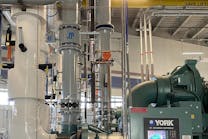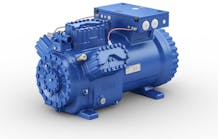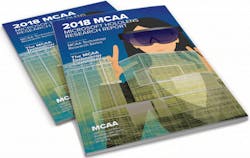The allure of technology in the construction industry is efficiency — of time and resources, ultimately to make companies more profitable. Construction tech can make workers more productive as it automates some tasks. A more efficient jobsite can reduce lost time due to injuries or excessive change orders.
Ideally, technology allows for collaboration between all the players on a project — owner, architect, engineer, general contractor and subcontractors — at the start of and throughout the construction timetable. Industry experts agree that inclusion of all players at the beginning of the project, and identifying and resolving issues before construction begins, is a major factor in getting facilities built on time and within budget.
Yes, there is a learning curve, depending on the tech savvy of your company and your employees. But an investment in technology now can only help your company in the future. Not only can it make you more competitive in your market, but it will also make you an employer of choice. Construction industry workers are still skewing older. Industry groups have expended much time and energy to build up the professionalism of the trades. Technology is one area that can make the construction trades more appealing to young people who have never seen an 8-track player, a rotary phone or a floppy disc.
But with all the new tech out there — drones, virtual reality, augmented reality, 3D imaging — it can be confusing to sort out what is practical for today versus the promise of tomorrow.
Listening to Membership
The Mechanical Contractors Association of America understood members’ dilemma and rolled out an ambitious new Technology Initiative about four years ago. It came to the board’s attention during a strategy meeting that many of its members did not have the resources for research and development at their businesses.
“Technology has been changing the construction industry faster than many contractors can keep up,” says Sean McGuire, MCAA’s Director of Construction Technology. “We realized that our members’ aptitude to adjust to this change will help determine how successful they are going forward.”
To help contractors grapple with the immensity of new information, MCAA created the new Technology Initiative to act as an R&D resource for its member companies. “We know we can’t replace the work that is done to truly determine if a new tool, software or process is right for your business, but the goal is to separate the chaff from the wheat, find the most relevant information, explain the concepts and save time trying to research everything yourself,” adds McGuire.
Since the initiative began, MCAA has commissioned a series of research papers on everything from BIM and 3D scanning to the effectiveness of the Microsoft HoloLens in a construction environment. They also went from having just one annual technology conference to integrating technology education into every one of its national programs. Says McGuire: “There are many challenges that mechanical, plumbing and service contractors face, and as an association, we know that it can’t be communicated in just one meeting. We approach it in every meeting and reinforce its importance.”
Building Information Modeling (BIM)
The most important piece of tech anyone working in the nonresidential side of the industry can have is building information modeling software. Created in the mid-1980s, BIM and 3D modeling have evolved to be a must-have for anyone in commercial, industrial or institutional construction.
“With BIM, the process begins to shift from a paper environment to a digital one,” McGuire explains. “Suddenly we’re not only designing buildings on computers, but we’re coordinating more, we’re attaching more information and ideally collaborating in the process. BIM’s role in the process is to become the backbone of the project and many of the other technology improvements are really about integrating with BIM or optimizing it.”
In 2015, less than half of MCAA members had worked with BIM on a project. Today, virtually all have, he adds. “Some companies may be outsourcing those services , but more building owners are requiring that their projects are coordinated through BIM.”
When it comes to BIM coordination, MEP trades can carry a heavy burden. Mechanical, electrical and plumbing systems have to be detailed, up to code and fit within cramped, unseen spaces. Calculating how each system fits and their order of installation takes a lot of coordination and redesign.
Granted, the BIM process on its own will add design costs to any project. The upside of using BIM is that it unlocks other processes that can really boost productivity and installation time. Additionally, their team has richer data to work with. Fabrication facilities have isometric drawings, field crews have better drawings and material information, project managers have a greater understanding of progress and the work performed outside their trade.
Robotic Total Stations
Robotic total stations (RTS) have revolutionized field layout and installations on construction projects. They provide accurate measurements and layout points and fewer mistakes. “In the MCAA research report’s case study, we found that one operator, using a robotic total station can measure about three times more points than a team of two using traditional layout” adds McGuire. “So the ROI often can be recovered on a single job.”
An RTS combines model information with a precise electronic distance measurement tool that allows the device to know exactly where it is on a jobsite. Once its position is determined, it can quickly lay out any point in the real world that was drawn in a model. For construction projects, that could be wall placement, hanger points or penetrations.
Finishing the layout task quickly with an RTS — such as those made by Trimble and Leica — allows the field tech more time for inspection, which can also be performed by an RTS. As McGuire notes, “An RTS can also be used for position verification of existing equipment and QA/QC. Contractors can ensure that systems were built in the proper place by measuring the installed location.”
Faster and more accurate layouts increase field productivity. So companies can realize cost savings on labor, time and travel expenses.
3D Scanning
One of the challenges that companies face when using BIM is bringing the existing space into a project. On projects that involve existing buildings, you have to begin knowing basic geometries, what equipment is being replaced and with what it needs to be integrated. So contractors now are exploring the use of 3D scanning, especially useful in renovation projects where they have to replace or work around existing equipment.
While both an RTS and a 3D scanner are accurately measuring distances, an RTS does it one point at a time while a 3D scanner will rotate and capture 360 degrees of measurements all at once. These measurements generate a “point cloud” that can be translated into a BIM model. “3D scanning is a great tool that allows owners to maximize their operations times. A contractor can 3D scan a space, build a BIM model and fabricate most of the work before they need to shut down operations for renovation.” McGuire notes.
Of course, as-built drawings for existing buildings may be incomplete or inaccurate, especially in older buildings. Facility managers are using 3D scanners to create accurate 3D models of the interior and exterior of the building — a helpful tool when making plans for a renovation or addition.
“Contractors are also finding other innovative ways to use 3D scanners,” McGuire explains. “I’ve seen contractors who have artfully used them to scan confined spaces like inside manholes. A quick 3D scan of a confined space will tell them if they even have to enter the space at all, saving the additional time to get in rigging equipment and going in spaces with greater risk. It keeps people safer but also saves time.”
So this is an area that can be outsourced to a firm specializing in 3D scanning services such as TruePoint, he adds.
Field Communication Software
Another benefit of digitized building information is easier and better communication to and from the field staff. Smartphones and tablets are becoming necessary tools on the jobsite. This BIM-to-field data exchange — from firms such as Bluebeam or PlanGrid — provides field techs more complete information about a building when installing new piping, ductwork or HVAC equipment.
“They’re not just looking at 2D paper plans and trying to interpret them. (Now) they can use a smart device to get access to 3D or isometric drawings, manufacturer data and project notes,” McGuire says. “It is not a one-way street, though. These platforms are also being used to verify field measurements, project documentation with pictures and video and to communicate back to design teams in the office.”
On the service side, collaboration and communication also are important. A BuiltWorlds research report, “Field Services in an Increasingly Impatient World,” discusses ways technology, collaboration and communication can improve a service contractor or facility maintenance business.
“By emphasizing the availability of knowledge sources while on the road, technicians can easily obtain the information they need for a specific job,” the report notes. “Through cloud-based systems and mobile access, information is just a few clicks away, whether it be a library of educational videos or real-time face-to-face conferencing with expert technicians. This brings a wealth of knowledge to any location, at times marking the difference between fixing a problem during the first visit versus needing to roll a second truck.”
Augmented Reality
The next level of BIM integration is augmented reality. Augmented reality can be used to overlay scale 3D representations of the BIM model in the real space it is to be installed.
MCAA commissioned a report on this technology, specifically focusing on Microsoft’s HoloLens. “The big barrier to entry wasn’t if a HoloLens could visualize a BIM model; the software was already there” McGuire says. “The barrier was if you could use it on a jobsite safely. The challenge is that you still have to wear personal protective equipment (PPE) like hardhats and safety lenses.”
With that in mind, Microsoft last year took the step of certifying the HoloLens as PPE so you can wear it safely without additional goggles. Trimble, which developed construction-specific software for the HoloLens, now also has created hard hats that can clip onto the device safely.
“This unlocks a very powerful visualization tool for the construction team,” says McGuire. “Instead of looking at a 2D drawing and trying to picture in your mind the elevations, placement and space, the HoloLens can be used to visualize the entire design in real space.”













